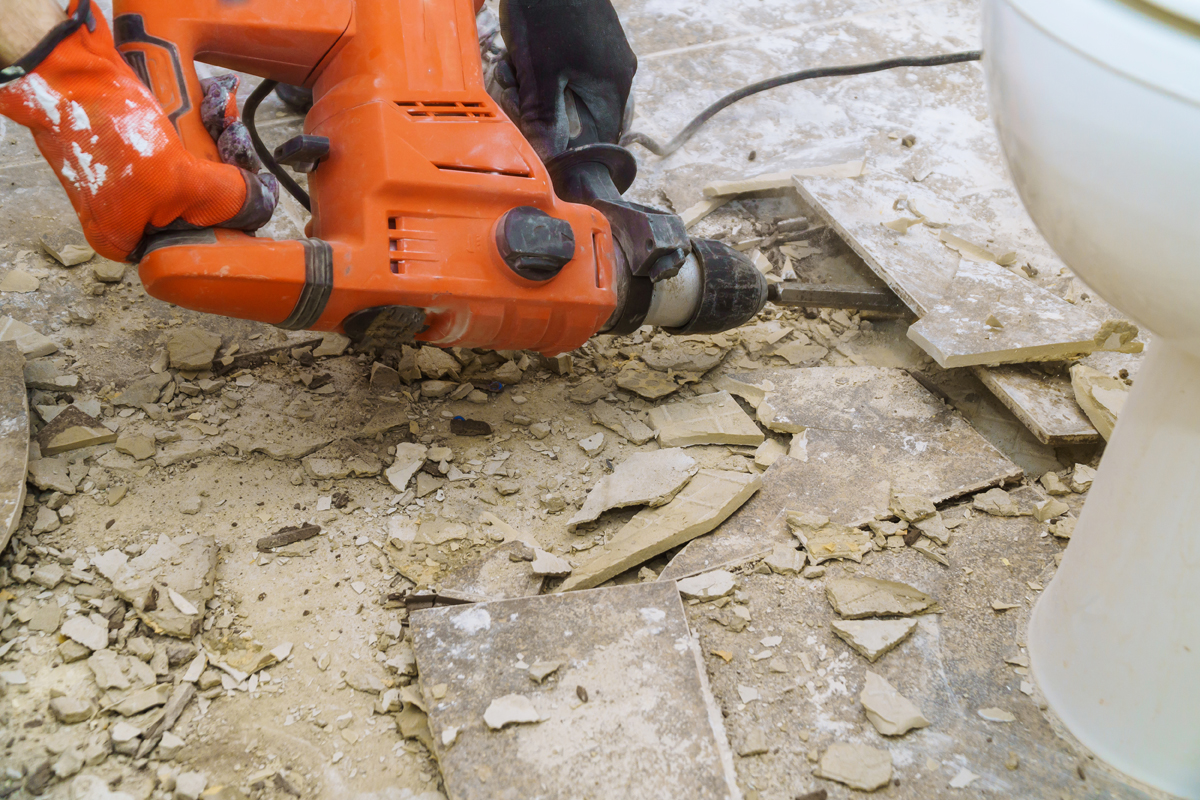

Fixing 5 Big Food Safety Hazards in Aging Buildings
By Grainger Editorial Staff 6/2/19


An aging facility can be a constraint on production, but it’s easy to forget about the contamination risks that come with working inside an older building. From leaky roofs to chipping floors, older facilities can introduce food safety hazards in every zone of production. If you’re working in an aging building, your food safety plan needs to identify the hazard control points that are unique to the facility.
Vigilance and preventive maintenance are the keys to keeping your operation safe. Start by making sure your qualified individual has some sage guidance from the safety team—your QI might be extremely knowledgeable when it comes to cooking temperatures and utensil sterilization, but they may need to rely on a teammate for advice when it comes to peeling paint and old pipes. In an older building, be aware of the five big contamination hazards:
1. Crossing Paths: If your facility is aging, it was probably designed for a completely different workflow. Ideally, the plant’s layout would prevent cross-contamination—workers would never have to pass through the production floor to get to another area of the building, and ingredients would progress from bulk storage to final packaging without ever crossing paths. But an old building may bring unwanted interactions.
If you can’t modify the production process to fit your building, then strict safety procedures are your best option. Color coding can be a powerful psychological tool—workers won’t be tempted to “just duck through” the packaging area without changing into sterile PPE if they know they’ll immediately be noticed.
2. Toxic Walls: Scratched paint and broken tiles don’t just make your production floor look dingy—they can also expose old, toxic building materials and generate a dust hazard. Lead paint and asbestos tiles haven’t been used in decades, but they were pervasive in the mid-century construction.
When the wall in an aging facility gets gouged, the divot will likely expose layers of old paint beneath. There’s a strong chance that the bottom layers will contain toxic lead. Similarly, if a broken tile reveals an older floor beneath, you may be looking at asbestos tile. Left exposed, these materials will produce traces of dust that can contaminate products and endanger workers.
Toxic materials can be managed—you don’t have to strip the building to the girders. But you do need to be aware. It’s tempting to just “touch up” scuffed paint with a fresh coat, but epoxy paint will not adequately seal in the lead beneath. You’ll need to treat the damage with an encapsulant specifically formulated to serve as a barrier against lead. Damaged floor tiles should be treated with an asbestos sealant to lock in the toxic fibers, then covered with a new flooring material that will protect the underfloor from further damage.
3. Utility Breakdown: The plumbing in your building may be a throwback from a different era. Boilers, pipes, and ductwork can last for decades, serving the plant through numerous owners. But just like the floors and walls, older equipment can be a hazard—especially when it isn’t maintained.
If your boiler is more than thirty years old, it almost certainly came with asbestos insulation. In addition to taking precautions when servicing the boiler and ductwork, you’ll need a plan to keep the boiler room quarantined during maintenance, preventing cross-contamination of production areas.
Lead pipes are another potential issue. You can test your water at the tap to determine whether your water is contaminated. Mitigation can be as extensive as replacing pipes, or as simple as keeping the system flushed to prevent residue buildup.
4. Chipped Fixtures: Listeria loves a crevasse. The bacteria will colonize any surface that can’t be scrubbed, and—unlike most foodborne pathogens—listeria can lay dormant for weeks or even months before spreading into food.
That’s why chipped fixtures in older buildings can be a big hazard—any crack a cleaning sponge can’t reach into is a potential harbor for foodborne pathogens. And in an aging facility, wear and tear accumulates over the years. Your food safety plan should include a regular search for damages that present a contamination risk.
5. Leaky Roofs: Your staff will usually notice when it’s raining inside. But storage areas, especially bulk storage for non-perishable ingredients, may only be visited sporadically. A dripping roof can contaminate ingredients with runoff and create the conditions for bacteria to thrive.
Rain doesn’t come on a schedule, so your inspection routine needs to be flexible. Pay closer attention to the areas of your facility that aren’t populated, where a leak might go unnoticed. And tighten up procedures on the loading dock—replace any cardboard packaging warped by humidity during transit immediately; that way, you’ll know for sure that water-damaged boxes are the sign of a leaky roof.
In an old building, there are no small problems. Little issues are just the leading edge of serious contamination risks. If your workforce has embraced a culture of safety, you’ll have an easier time staying on top of the aging building’s hazards. Workers are going to be the first ones to notice chipped drains or damp boxes; you need to build a culture where they feel comfortable speaking up before the risks from the aging structure become unmanageable.
![]()
The information contained in this article is intended for general information purposes only and is based on information available as of the initial date of publication. No representation is made that the information or references are complete or remain current. This article is not a substitute for review of current applicable government regulations, industry standards, or other standards specific to your business and/or activities and should not be construed as legal advice or opinion. Readers with specific questions should refer to the applicable standards or consult with an attorney.






